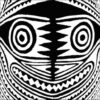Papuan Gulf Masks
Papuan Gulf Masks: The Eharo and The Hevehe
Masks from the Papuan Gulf, particularly those created for the Hevehe ceremonial cycle, represent one of the most fascinating and complex artistic traditions of the Gulf of Papua region in Southern New Guinea. These masks were central to the spiritual, social, and political life of the Elema people, especially in the coastal villages between Kerema and Orokolo.
The two main types of mask were the Eharo and the Hevehe. Hevehe due to their sacred nature were burnt after use so very few exist even in Museum collections.
There are other forms of mask used in the Papuan Gulf West of the Purari River but these masks are not covered in this Article.
If you have a Papuan Gulf Mask and would like to know it’s value please feel free to send me images.
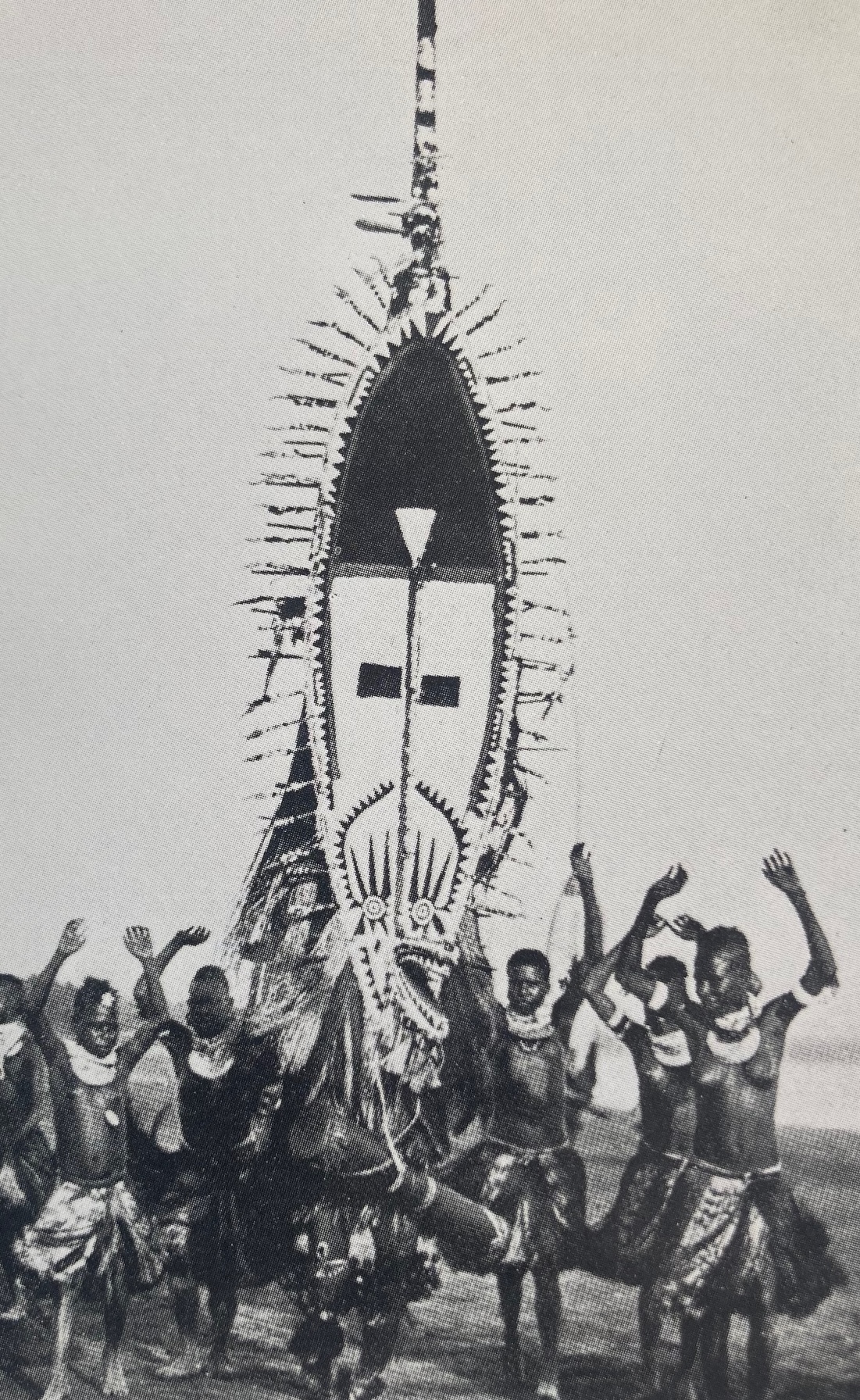
Above: Hevehe Mask being danced in Orokolo 1930’s
Papuan Gulf masks: Eharo
Eharo masks are made from Tapa cloth over a cane frame and come in many styles and normally range from 40cm to 120cm
Eharo mask, were created primarily for amusement”maea morava eharu” (“things of gladness”), danced as a prelude to more sacred rituals.
Most eharo masks depicted spirits and totemic species associated with individual clans or Ancestral hero’s from local oral tradition.
Eharo represent supernatural beings, ancestral hero’s as well as humorous figures, such as lecherous old men. The Morningstar mask is for example a very serious mask for which the reaction from the crowd is quite respectful serious and sacred. This is in stark contrast to another mask represents a lectureous old man with the masked dancer deliberately showing his genitals while squatting down to get a laugh from the crowd behind him.
Each group that share the common eharo spirit will perform. While some performers beat Kundu drums other male and female dancers sing and some hold mini Gope boards or dance boards.
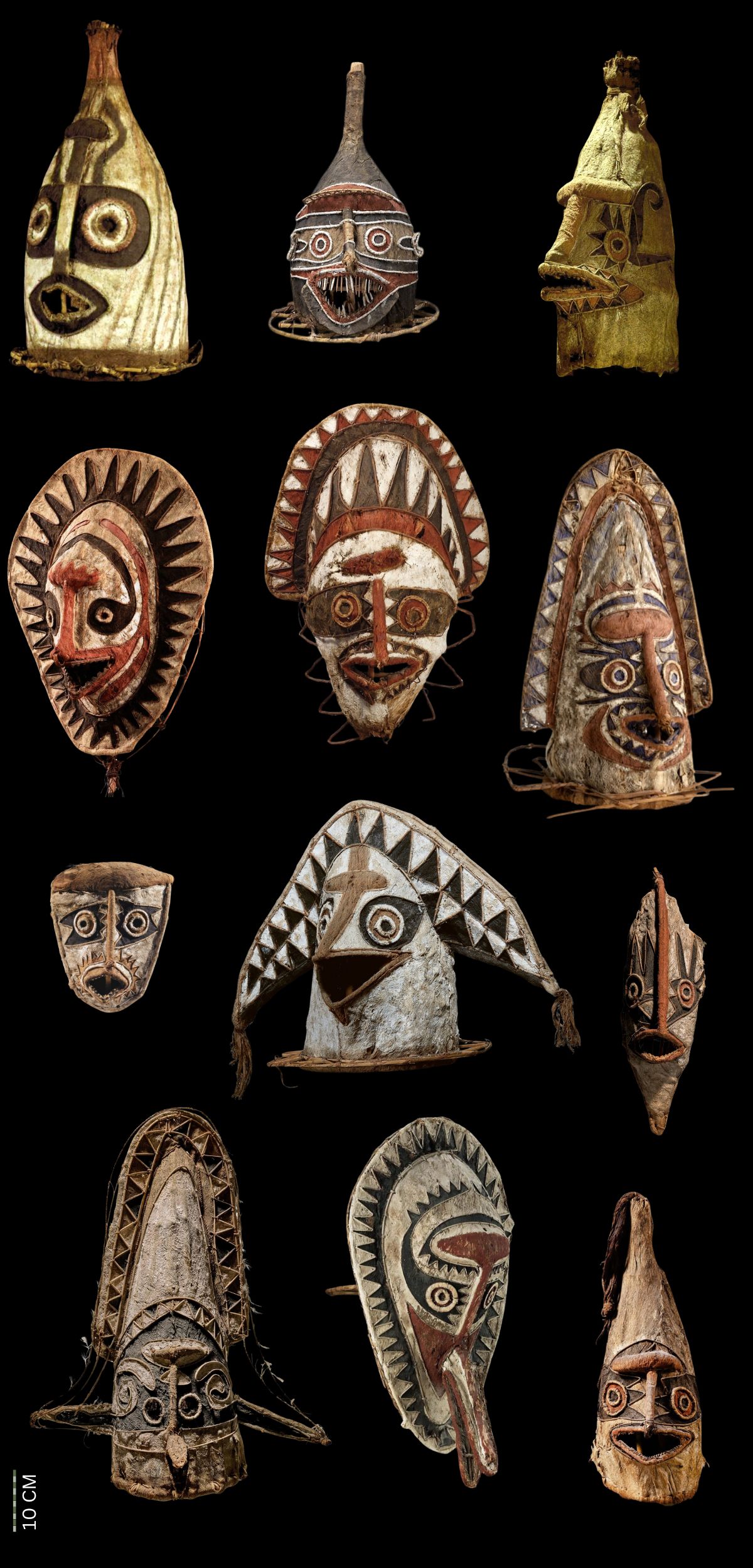

Meaning of Papuan Gulf masks
Throughout new Guinea masks are vechiles for spirits and all these spirits are different with different characters powers natures and meanings. In the papuan gulf the spirits that inhabit Hohoa boards, bull roarers and Marupia are all the same spirits represented by masks.
Masks bring spirits to life and although these spirits are ever present they are never more alive than during a masked dance.
Masks were made and worn by young men from neighboring villages at the request of the village hosting the hevehe ceremony. As they entered the host village, the women pelted them with shredded coconut to neutralize their seductive powers. Now harmless, the eharo danced surrounded by large groups of men and women to the amusement of the assembled crowd.
Eharo masks are still danced today at the papuan gulf dance festival held once a year. This dance festival unlike others is rarely visited by europeans and is more for the local people than visitors. Such mask activities are an opportunity to bring different villages and clans together.
Left: Eharo masks (not scaled)
Papuan Gulf Hevehe masks
The second type of mask is the apa-hevehe mask and was a part of the hevehe cycle abandoned in the 1940’s
These masks have a shape distinct from the Ehato mask. Hevehe masks are large flat ovals attached to a single central pole tapering at the end which has the mouth. The face is in the bottom third of the oval and the mouth often depicted with sharp teeth extends at a 9o degree angle from the plane of the oval tapa covered section. The reverse of the mask is a cane framework additionally covered with grass over the framework. Some tall Eharo masks with long foreheads are misdescribed in collections as hevehe.
Hevehe Mask Cycle
The Hevehe cycle was a grand ceremonial tradition performed by the Elema, lasting anywhere from 10 to 20 years. It revolved around the belief in ma-hevehe, powerful sea spirits who were thought to visit the village during this time. Central to the ritual were large, elaborate apa-hevehe masks and smaller eharo masks—both constructed from bark cloth over cane frames. These Papuan Gulf masks were striking in size and appearance, often reaching several meters in height, and they played a crucial role in both public displays and secretive initiation rites.
Beyond the masks, the Hevehe cycle included other sacred objects such as decorated bull-roarers, drums, and hohao (ancestor boards), each contributing to the multisensory and symbolic experience of the ceremony. The masks and other ritual items were crafted by male elders, who held exclusive rights to the production and performance of Hevehe. Their leadership within this elaborate cult reinforced their authority and elevated their social status within the community.
The hevehe cycle and the associated masks was abandoned not long after it was recorded by Anthropologist and Photographer F. E Williams.
I have rewritten below some of F. E Williams descriptions in more contemporary language.
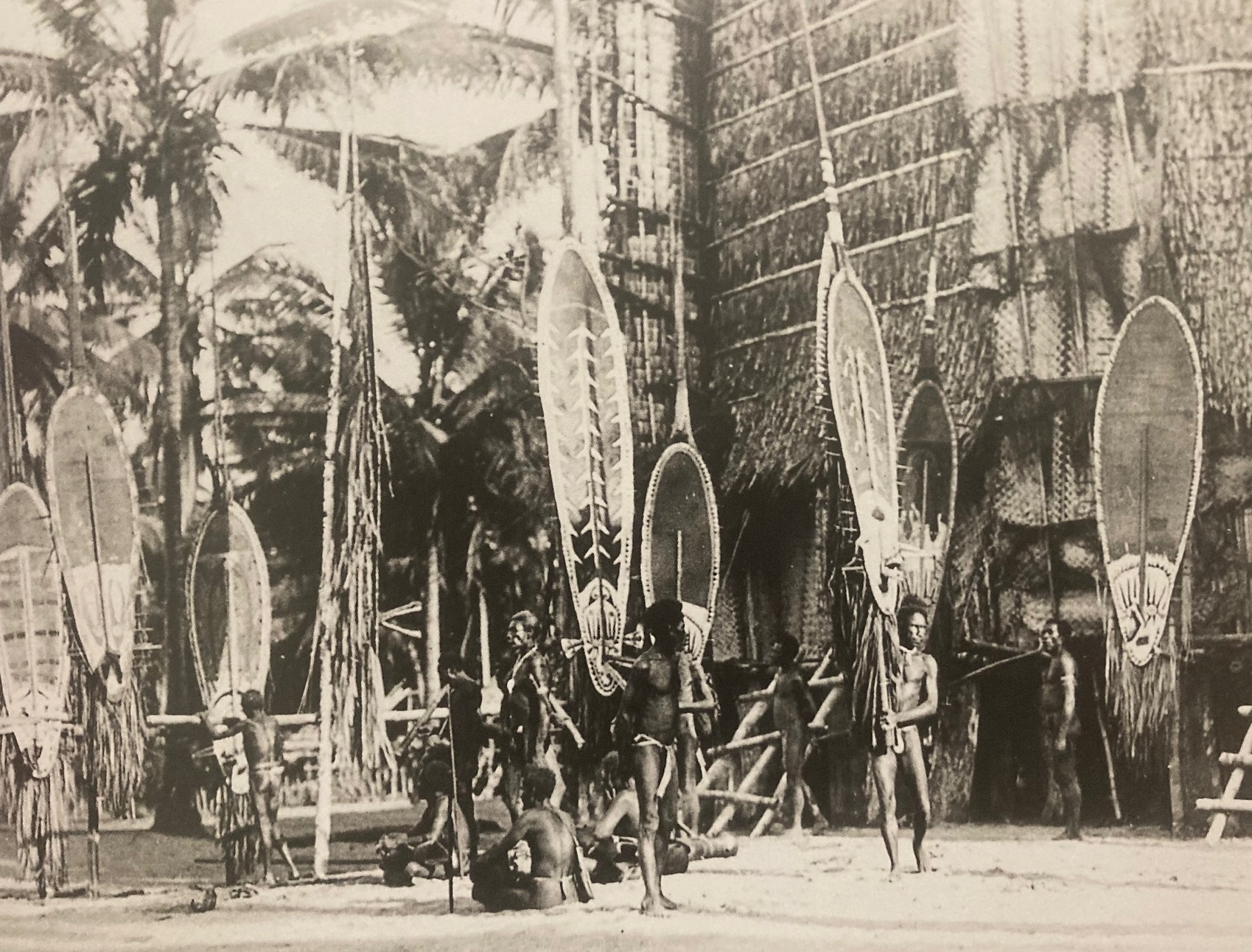
Orokolo, December 1931: The Masks stretch their backs
The hevehe masks, each bearing its own unique name, have taken many years of dedicated, meticulous work to create. Their construction is a gradual process, carried out in stages with long pauses in between. Once the masks are nearly finished—requiring only minor repairs, some painting, and the addition of feathers—they are brought out from the eravo (Mens House) during what are known as preliminary descents.
The first of these, as anthropologist Williams witnessed at Avavu Ravi, is called Avaha Haipuravakive, or “Stretching the Backs.” The event has a practical tone, or at least pretends to, especially in front of the women. It is meant to give the impression that the hevehe, having sat cramped inside the eravo for so long, are now emerging to stretch their backs.
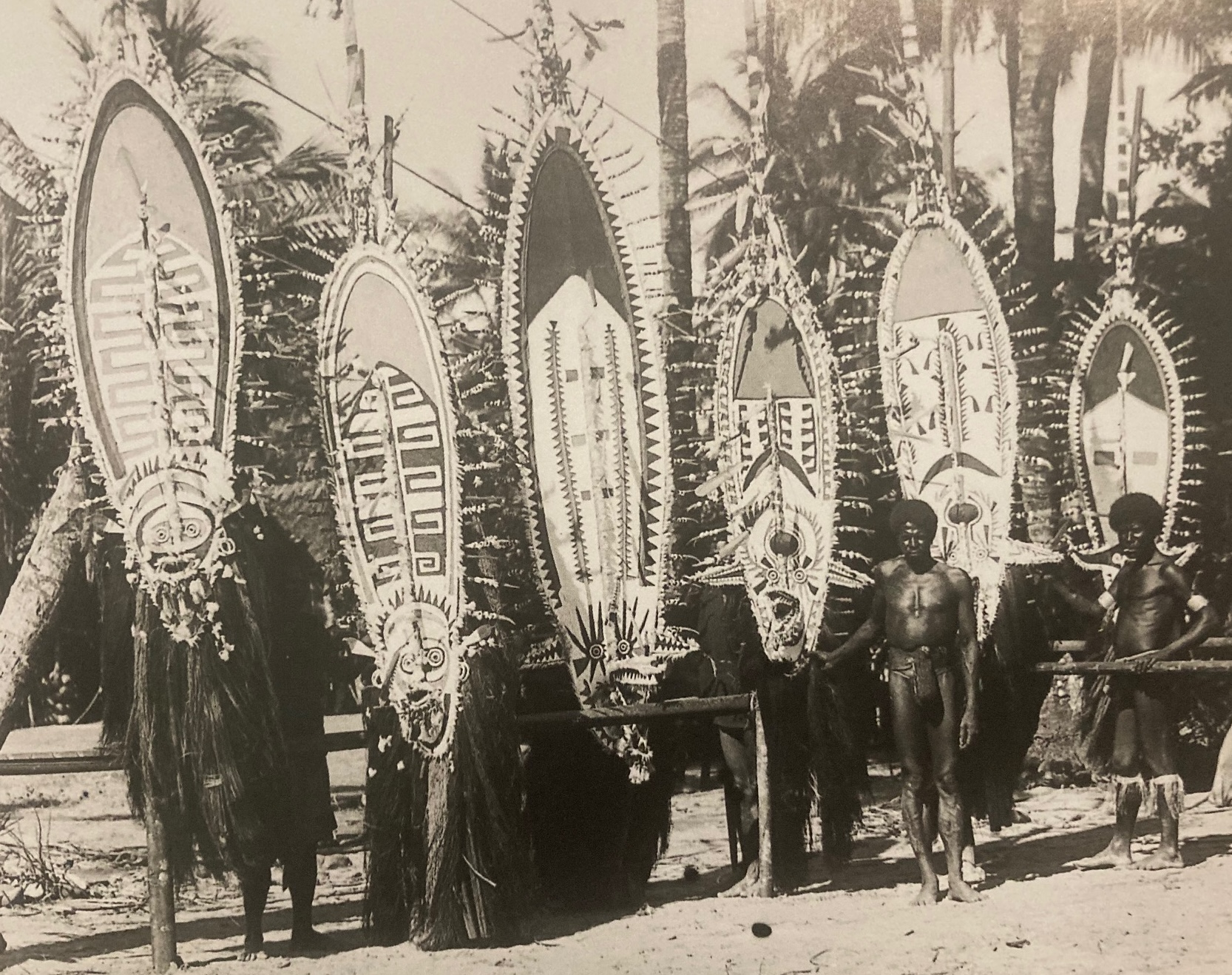
Papuan Mask Cycle: Orokolo, February 1932
A group of hevehe masks, fully painted and feathered, stands complete, awaiting initiation. The finished hevehe presents a striking and otherworldly figure—strange and unlike anything found in nature. With its flowing, oversized mantle, the mask can appear awkward or unwieldy. Yet this ungainliness is often offset by the unexpected grace and agility of the wearer. In full motion, the effect is so commanding that the word majestic feels entirely appropriate.
At Avavu Ravi alone, Williams counted 122 of these masks.
In Orokolo, February 1932, two boys are seen wearing worn Hi Kairu costumes a few weeks after the hevehe descent. Hi Kairu, the “Ceremony of the Yellow Bark-Cloth Boys,” occurs the day after the third hevehe descent, when the masks are fully decorated. Novices (Harehare-ahore) wear bright yellow turmeric-dyed bark-cloth tunics and distinctive headgear. One boy wears a maipairi (a shell wristlet), and both wear a single white hornbill feather—signifying they have completed one hevehe cycle. Individuals may be initiated in multiple cycles, with each subsequent initiation granting the right to wear an additional feather, marking the occasion as an honor rather than a full initiation.
Initiation into manhood involved a series of other practises that will not be discussed here and inside the Mens house because they are contrary to european morality.
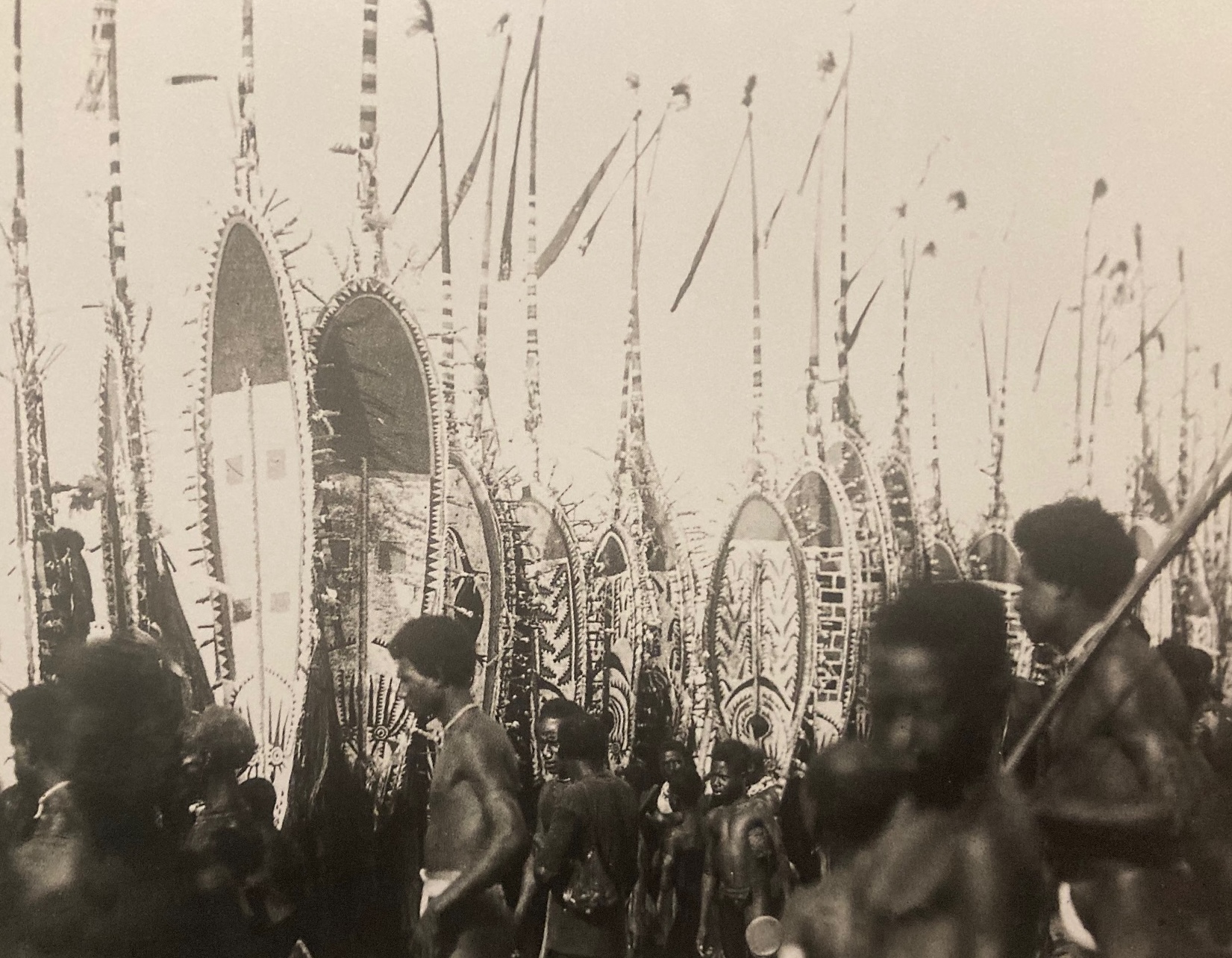
Orokolo, March 1932 – Hevehe, the Laraa Procession
After a month of dancing in small groups on March 9th, all was prepared for Laraa, the grand procession that would mark the end. This ceremony signaled the final appearance of the hevehe, and as they descended from the eravo for the last time, they were met with scenes of deep emotion. Women rushed forward to embrace the great, jutting jaws of the masks, pressing kisses to their painted faces. Many wept openly, overcome by the bittersweet farewell.
After one final, spirited dance, the hevehe formed into two long lines on the beach, slowly advancing toward each other. Along both sides, the gathered spectators—now taking over the drumming—kept dancing, surrounding the procession with rhythm and movement. As the two lines of hevehe met at the center, they turned inward and began their return to the eravo, moving two by two.
It was in this moment, gathered in tight formation, that the hevehe appeared most awe-inspiring. Their towering spires bristled like an army of giant spears, advancing in perfect unison toward the foot of the papaita. One by one, they began to ascend.
Their retreat was dignified and precise, a fitting close to what was, above all, a solemn and moving occasion. The Laraa procession was not just the end of a ceremony—it was a farewell to something sacred, something living and deeply felt by all who had witnessed it.
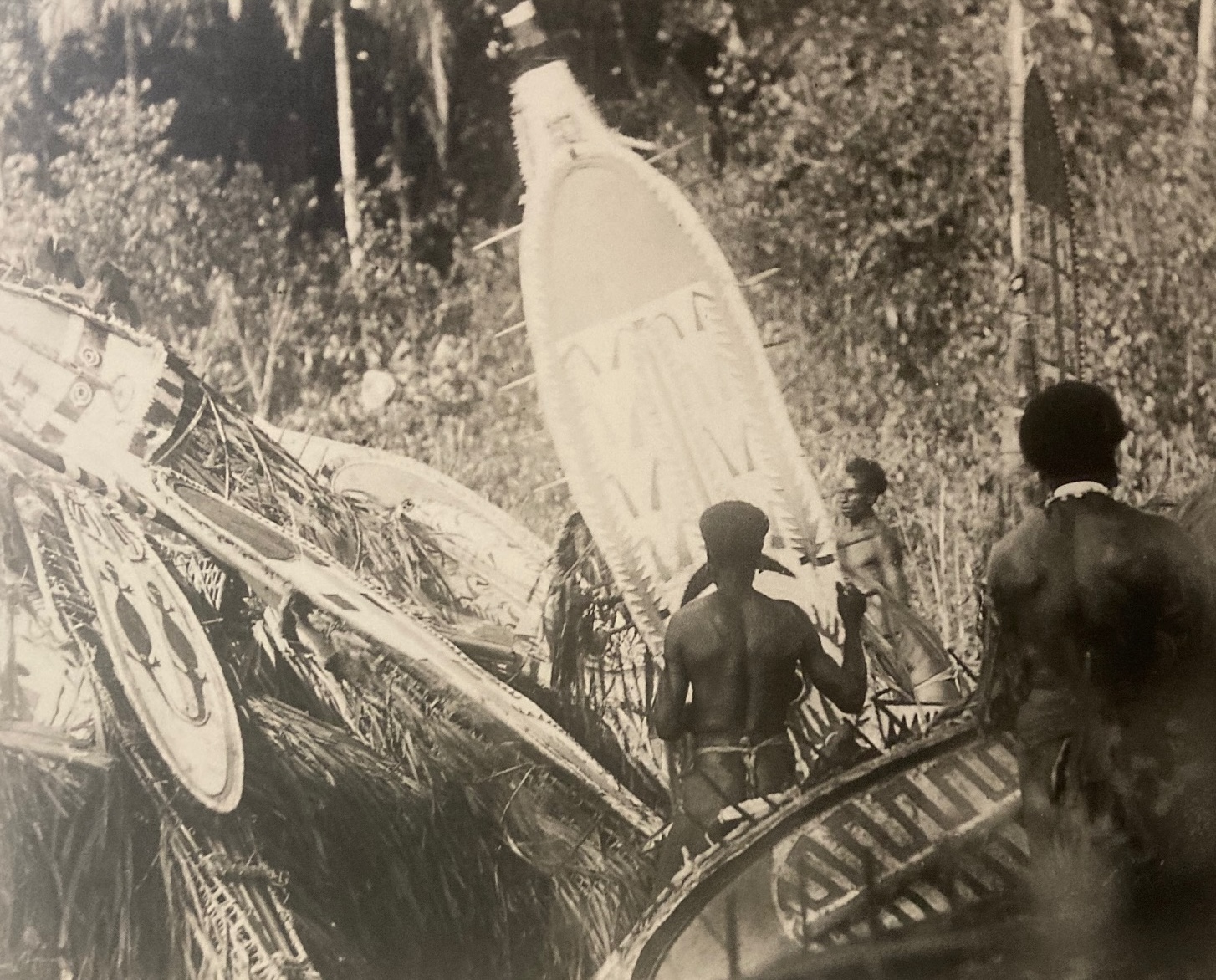
Orokolo – Piling Up the Hevehe masks for Burning
After the ceremonial slaying of the last hevehe with bow and arrow, a scene of utter destruction unfolded. The masks, no longer worn but merely carried, began to pour out of the eravo. They were unceremoniously propped against house walls or discarded carelessly on the ground. With no hint of reverence or regret, their owners proceeded to strip off the maemantles and feathers.
The masks were then gathered and taken to a nearby creek, where they were tossed into three unceremonious piles. In due course, Haio descended, his presence signaling the final act. In a voice raised slightly, he spoke a few brief words and thrust a torch into the first pile.
Within moments, the product of years of craftsmanship—of art, labor, and devotion—was reduced to flames. Yet, there was no sense of awe in watching the fire consume the masks, except perhaps from the ethnographer observing the scene.
Haio had offered a simple prayer before the flames took hold: “Now I am about to burn you. Look kindly on the men of my eravo. When they hunt, let not the arrow strike the ground but the eye of the pig. I do no harm to you. For many years, I have fed and cared for you. Do not be angry with us.”
Understanding Papuan Gulf masks
The Hevehe cycle wasn’t only a spiritual event but also a powerful tool for maintaining social and economic order. It underscored the Elema’s gerontocratic system, where older men controlled initiation rites, exchanges, and the distribution of ceremonial knowledge. Participation in Hevehe rituals, particularly the creation and use of these Papuan Gulf masks, was a pathway to higher status and influence.
The old men are European equivilent of preists, initiates those recieving communion and the masks the embodyment of the Gods. Mask cults were religeons which empowered the preists who maintained social order.
Recommended Reading
All images in this article are for educational purposes only.
This site may contain copyrighted material the use of which was not specified by the copyright owner.
